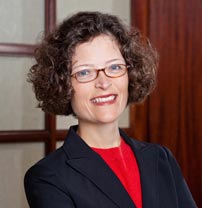January 8, 2015

By Sarah H. Lamar for Savannah Morning News
In part one of this series, we examined the scope of President Obama’s recent executive order on immigration. This article will explore the elements of the order that relate to businesses, and high-skilled workers in particular.
The order made specific provisions for what Obama termed “high-skilled immigrants.” These are individuals with advanced degrees, such as doctors, engineers, researchers and others. Currently, these workers often face years of delay in their attempts to obtain a green card and achieve lawful permanent resident (“LPR”) status in the United States.
The order seeks to modernize and streamline the process for issuing green cards. This includes pre-registering for adjustment of status and improving the PERM system, which requires the employer to test the labor market to ensure that an immigrant will not take jobs away from a U.S. worker.
Once an individual has obtained a high-skilled work visa (i.e., H-1B), he or she will have a simpler time changing jobs. In the past, these visas have been tied to the individual’s specific employer, which made it difficult or impossible for these workers to move from one employer to another.
The new rules for these visas, which uncouple one’s visa status from a specific employer, are intended to promote competition and mobility and improve quality of life for many highly skilled workers without affecting their LPR applications. These changes will not increase the overall number of H-1B visas available, as modifying the annual quotas would require congressional action.
DHS will also update its guidance on L-1B visas, which allow foreign workers with “specialized knowledge” to transfer from a company’s foreign location to the United States. In particular, the meaning of “specialized knowledge” will be clarified, guidance which many immigration lawyers have long requested and which will promote consistent application of the rules.
To help grow the economy, DHS will increase options for foreign entrepreneurs — inventors, researchers and startup founders. In this regard, the government will issue guidance on the National Interest Waiver (NIW), which permits immigrant entrepreneurs of exceptional ability to sponsor their own green cards – if their work is in the national interest – without the need to engage in labor market tests.
The order also allows entrepreneurs to stay in the United States in a provisional “parole” status, provided they meet certain criteria. The preference given to these business creators is intended to stimulate job growth, attract investment and ultimately generate revenue in the United States.
These applicants must demonstrate that their income is above a certain threshold, and they will not be eligible for benefits such as welfare or tax credits under the Affordable Care Act.
Spouses of high-skilled visa holders will have an easier time getting their own work permits as well. Currently, spouses of H-1B visa holders are automatically granted an H-4 visa, which allows them to live here, open a bank account and drive but does not authorize them to work in the United States. Many of these spouses also have advanced degrees and technical training. The new rules will authorize these spouses to work as long as their H-1B spouse has an approved, pending LPR application.
The “high-skilled immigrant” portion of President Obama’s executive order is intended to benefit both American business and highly skilled workers, attracting capable individuals with the promise of better opportunities in the United States.
While many of these changes must undergo the regulatory process, and their full effect remains to be seen, local employers may find themselves with new hiring options to benefit their businesses.




